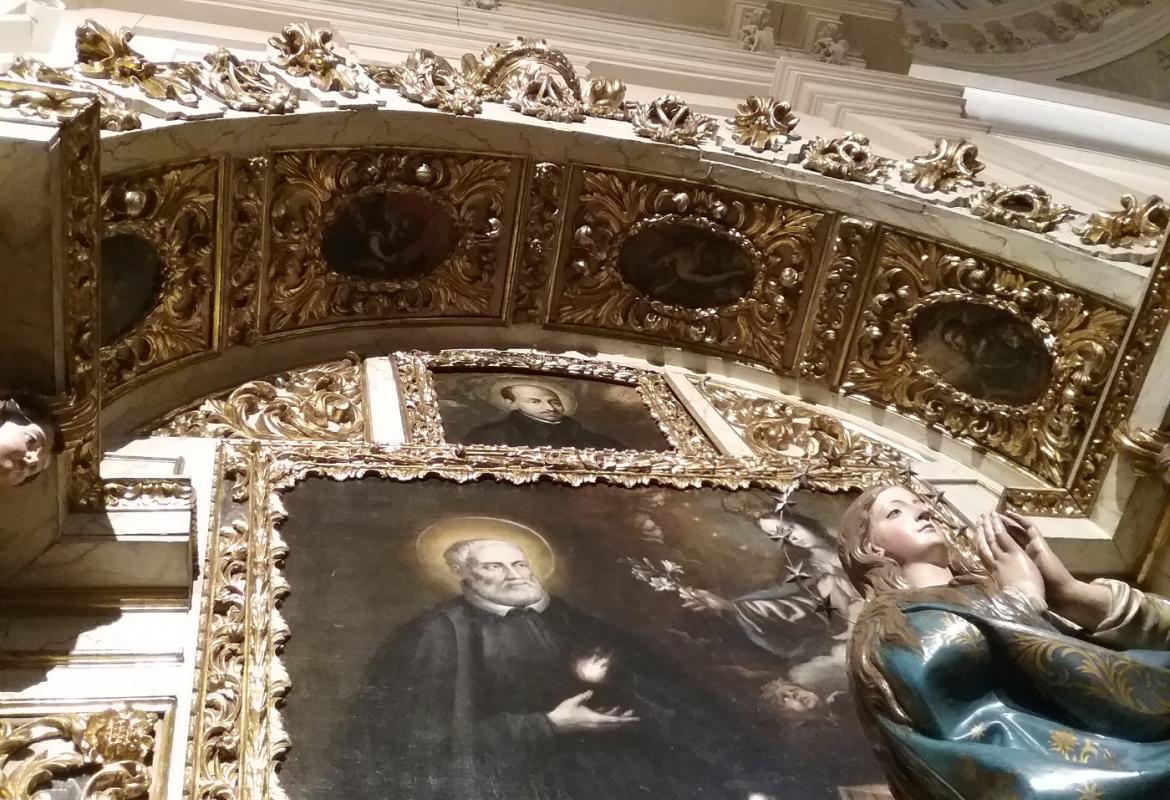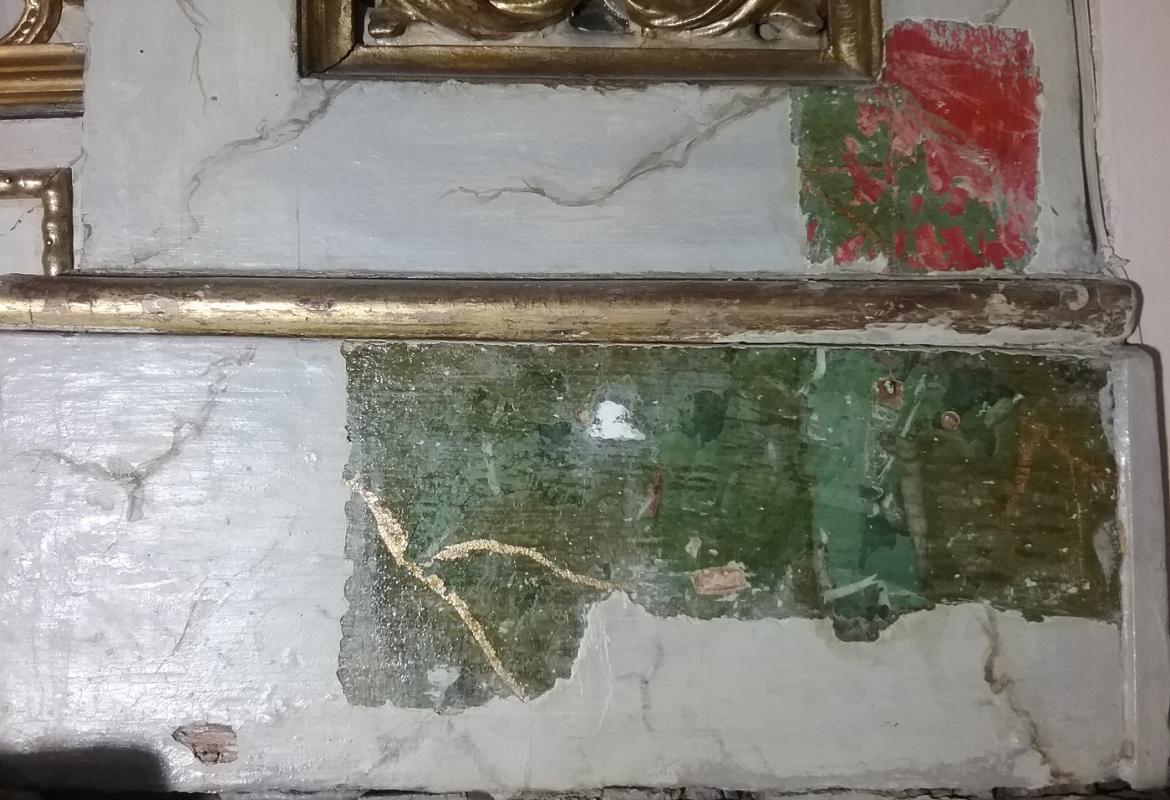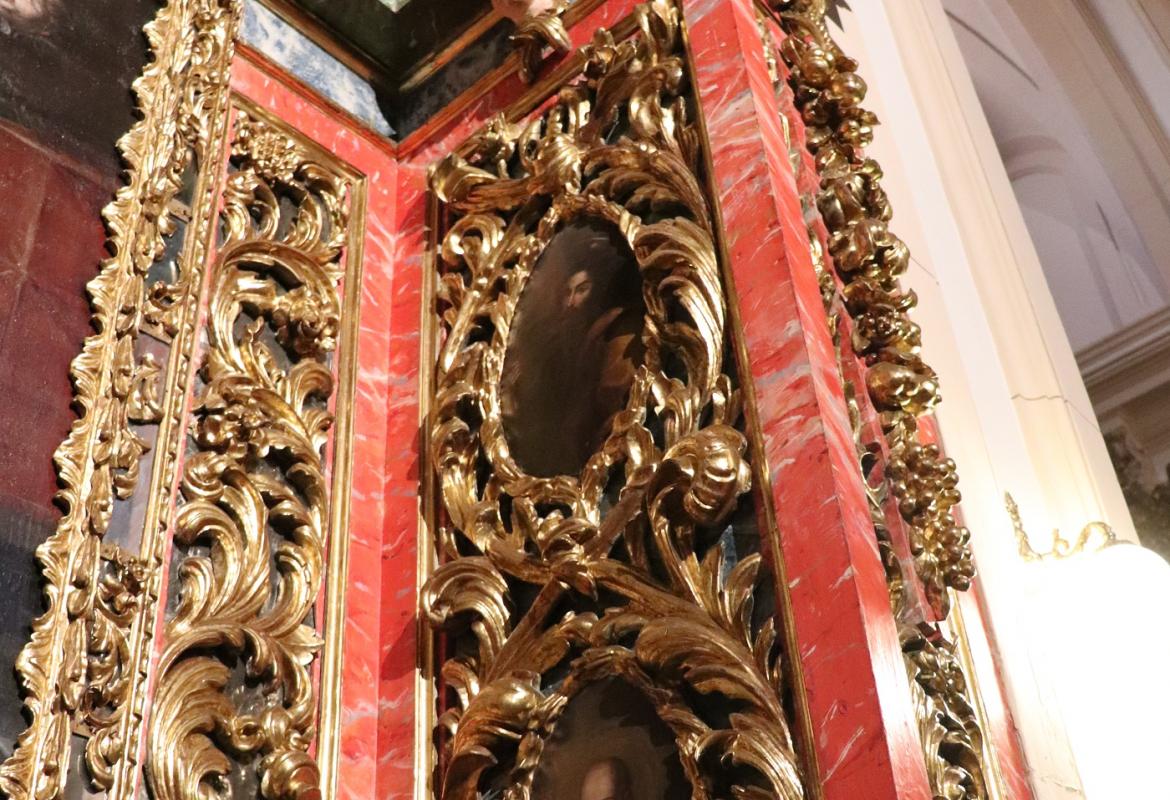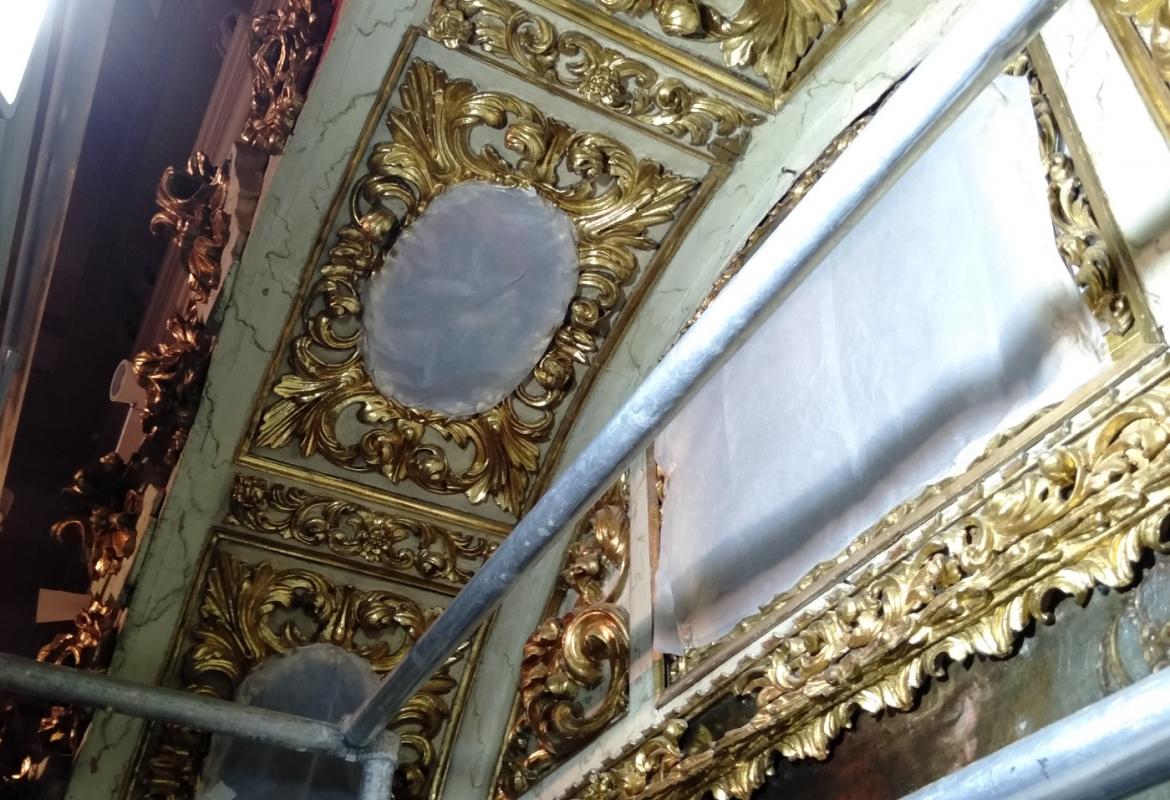
Restoration of the San Felipe Neri altarpiece of the Convent of the Discalced Trinitarians
Last third of the seventeenth century
The altarpiece of San Felipe Neri is part of an important group of baroque altarpieces that are preserved in the church of the convent of the Barefoot Trinitarians of San Ildefonso. It is located in the section of the central nave closest to the transept, on the gospel side.
Images of the altarpiece before and after its restoration:
restoration project
The work presented general repaintings of plastic paint imitating marbling in light tones, which almost completely hid the original polychrome of the altarpiece-niche, distorting the appreciation of the work and the original aesthetic sense. The only elements that did not show repainting were the decorative carvings, although they did present partial glitter touch-ups, and other mica reintegrations, in good condition.
Structurally, the altarpiece was not in a poor state of conservation. It was dirty and gaps were observed in the original polychromy that prevented a full appreciation of the work, as well as non-original added elements: altar table and steps.
After a study of the alterations that the work presented, the following interventions were carried out:
- First, there was a cleaning surface of non-adhering dirt by means of controlled suction and using an extra-soft bristle brush. Subsequently, after carrying out the corresponding solubility tests, a chemical cleaning of dirt adhered to the surface was carried out, using a solution of ammonium citrate in distilled water. To clean the gilding, I used alcohol applied with cotton swabs.
- Subsequently, the removal of overpainting with chemical and mechanical means, taking extreme care to protect the adjacent areas, where the polychrome was original, to avoid any involuntary damage to the work.
- The oxidized varnishes were removed and the saturation of the polychromy and the volumetric reintegration of lagoons, with epoxy resins, after which the chromatic reintegration, coloring with mica powder to imitate gold, and with watercolors and acrylic colors the polychromies.
The intervention carried out has made it possible to recover the original aesthetics of the altarpiece, having only worked on its structure. The canvases that it houses have not been the object of intervention.
Image gallery
Technical sheet
- Author
Alonso del Arco (1635-1704)
- Dating:
XNUMXth century, Baroque
Church of Monastery of San Ildefonso and San Juan de Mata or Convent of Discalced Trinitarians
Lope de Vega Street No. 18, Madrid
The Church of the Monastery of San Ildefonso and San Juan de Mata was declared a National Monument by Royal Order of September 17, 1921, and the Convent of the Discalced Trinitarians on November 11, 1943.
By Order 19/2017 of the Minister of Culture, Tourism and Sports, the protected area of the Convent of the Discalced Trinitarian Nuns was delimited.
The altarpiece of Saint Philip Neri It is a property protected by the Community of Madrid.
- Work team:
Maria de la O Vargas Ruiz.
- Date of the intervention:
2020
Aranjo and Costa, J. (1951),“The convent of the Trinitarians”. In HL Madrid
Bonet Correa, Antonio (1961). "Madrid Churches of the 1961th century". Madrid. Diego Velázquez Institute, 30, pp. XNUMX.
Menendez Pidal, Ramon. (1943). "The convent of the Trinitarians of Madrid", in Bulletin of the Royal Academy of History, t. 79, pp. 97-99 and 474-74, and t. 112, pp. 141-142.
Tovar Martin, V. (1990). “The Monastery of the Discalced Trinitarian Sisters of San Ildefonso in Madrid”. Spanish Art Archive, No. 251, pp. 401-418.
VV.AA. (2002). "Altarpieces of the community of Madrid. XNUMXth to XNUMXth centuries”, Madrid. Community of Madrid (2nd ed.), pp. 342-343.










